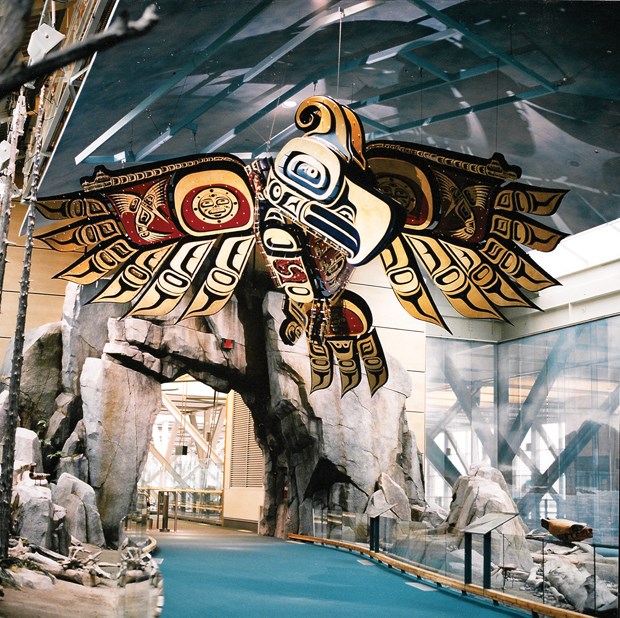It’s a good thing French sculptor Auguste Rodin lived in the time he did — the mid to late 1800s — because in today’s world he might just have a hard time getting his art into public spaces.
That’s the opinion of First Nations artist Connie Watts who in part of her public talk later this month will address the hurdles some artists have to endure to get exposure for their work.
“I think we have created so many rules, regulations and steps that we are losing out art,” said Watts, who on March 19 inside Richmond City Hall council chambers will be the first of three speakers in the Lulu Series: Art in the City program. “In public work, we are already hindered by aspects of liability. No sharp objects. Nothing that you can stick your hands into. They all inhibit that artistic process.
“Really, Rodin’s Burghers of Calais— a sculpture with five figures — I don’t think it would make it as a public work today,” Watts said by telephone Wednesday from her home in Port Alberni. “There are too many sharp edges. Kids could get caught in the middle of it.”
Watts, who was project manager for the Vancouver 2010 Winter Games, Venues’ Aboriginal Art Program, said public regulations need to be loosened up to allow the creative process to manifest itself — something she feels is especially required for First Nations art.
“I have lots of work out there, and I do a lot of work. But the way city systems are set up they are not conducive to that fluidity that First Nation artists need to work in,” she said.
“For me, my premise is that artwork is alive. It often develops as the process goes along. It’s more organic, rather than so structured and business-like,” she said. “And maybe it’s my upbringing, but we (First Nations) often don’t say things, we just do it.”
That’s the approach the Vancouver Airport Authority took when she was commissioned to provide a pieces for the international arrivals area.
“Basically, they said, ‘Hey, we need a piece up there, hanging from the ceiling,’ I said, ‘A thunderbird.’ and just made it,” Watts said. “I wouldn’t have been able to make it the way the cities are structured now. So, I think we are missing out on some great talent.”
Part of that, she explained, results in the under representation of aboriginal art in many communities.
“I think that often has to do with a misunderstanding of the work. If you talk to most people and they mention First Nation art, the first thing that comes to mind is totem poles,” she said. “But that’s not all we are. We’re not an antiquity. They (totem poles) are very important and a lot of people don’t understand what they are for. They are actually family crests.”
It’s Watts’ hope that the public, in general, becomes more curious about First Nations art and can delve into a culture that stretches back many centuries.
“Being open to that history is about bridging different ways to approach inclusion and understanding,” she said, adding that when it comes to public art in Richmond, new facilities will be willing to include aboriginal works.
“I know the Minoru Centre is going up now, and I am hoping they (city) will engage with the Coast Salish and also do their own research to find out what happened before on that site,” she said.
All Lulu Series: Art in the City events are free and start at 7 p.m. at Richmond City Hall Council Chambers, 6911 No. 3 Road. Seating is limited. Reserve seats by emailing [email protected].



